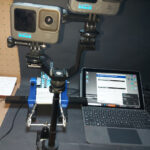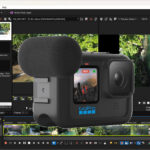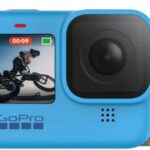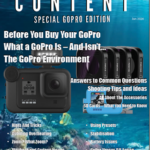Many, MANY moons ago, I was seriously into SCUBA diving. Living on the Gold Coast at the time, there was some opportunity (there is a wreck offshore called the Scottish Prince), and of course, the Great Barrier Reef was only a 2 hour flight away.
But I was lucky back then in also getting the chance to dive in Fiji, Vanuatu and Taveuni as well as off Cairns.
This was w-a-y before the days of GoPros of course, and so my image gadget of choice was a Nikonis II underwater film camera with twin strobe lights. I bought one second hand and it cost me, back then, around $2500 with all the associated bits you need.
In other words, big dollars in 1990 or so as I recall.
Sadly, the Nikonis met an untimely end due to a combination of stupidity and bad luck – but mainly stupidity. We were off to a dive off the island of Taveuni, and the boat trip out was around 90 minutes. In that time, the camera was not in the shade and consequently heated up.
Once all kitted up and in the briny, the guide handed it to me and within seconds, the colder water shrank all the waterproof seals protecting the camera and lights from sea water and ergo, a very dead camera.
A week later back home, and despite valiant efforts from a Nikon camera tech, there was no way this Nikonis could be brought back to life as the damage to the electronics was far too extensive.
And not having travel insurance made this a very expensive exercise.
Flash forward to today, and my SCUBA days are over unfortunately, mainly due to a permanent lower back problem which precludes me carrying the tanks needed.
Recently then, I have taken to simple snorkelling, and like my early days of SCUBA, in order to distract me due to an irrational fear of water – or drowning more precisely – I need to have a camera with me.
Whilst I do have a selection of GoPros and DJI Action cams to choose from, I revert to a GoPro Hero 9 Black and house it in the proper GoPro underwater housing.
The reason is two fold; if it is dropped in deep water and I have mistakenly not added the float tube / handle, monetarily wise it is not a great loss. You can get a GoPro Hero 9 for around $200 on e-Bay or better in Marktplace probably.
Secondly, it is easier to use for non-GoPro savvy people like my wife Jacqui as all she has to do is turn it on, press record, press stop and turn it off.
At the moment we are having a brief stay on Christmas Island in the Indian Ocean (there is another Christmas Island in the Pacific) and just out of the township settlement and near the jetty is small beach which has a coral bottom, ideal for the occasional snorkel, not too deep and quite safe, plus perfect for beginners as if you need to stand up you can until quite a ways out.
The visibility is excellent too, with lots of smaller fish darting in and out of the corals and feeding on the bottom.
This footage was shot by Jacqui on the GoPro Hero 9 Black in the housing and later I did a quick and dirty edit in Blackmagic Design DaVinci Resolve of which there is an exceptionally well featured free version for PC, Mac and LINUX.
So you see, today you don’t need to spend giga-dollars to get some footage to remind you of holidays, throw into Facebook or Instagram or email to family and friends.
Costings:
- GoPro Hero 9 – around $250 max
- GoPro Waterproof housing – around $90
- Floating Handle – from $10 depending on brand
- DaVinci Resolve – free
- Optional: With video and photography, light is everything; the more the better. Adding a light to your GoPro (or DJI Action Cam if you are using one of these) will give a whole new perspective of coral in particular and fish colour as well. But decent waterproof lights are not especially cheap. For decent kit, anything from $90 and upwards – the more the better and I’d start at around the $150 mark.
Caveats:
GoPro says their cameras are good for snorkelling / water sports as they are water proof. Essentially this is true, but is very easy to get a grain of sand or even a bit of dust caught in the battery /SD card door and if that happens, it is good night camera, just like my Nikonis. The full waterproof housing is not expensive and is excellent insurance.
Do NOT scrimp on memory card quality. Make sue you get the fastest read / write spec’d card you can t ensure all the footage and audio is captured. I use Verbatim cards and never had an issue.
Ditto for batteries. I have the GoPro “white” heavier duty ones, but whether you use these or the “blue” variation look after them, do NOT overcharge them, leave them in a charger for an extended period or use a charger that is overrated for the battery. Lithium battery fires are becoming more common as I am sure you have heard, simply because users don’t follow the rules and be sensible.
Finally, don’t ask “what are the best settings”. There are too many variables involved such as ambient light, brightness of the overhead sun, colour of the water, turbidity of same, distance from subject, what quality you want, slo-mo or not, audio or not and more.
Like anything else, practice makes perfect so start off with the camera set to auto everything, and as you progress, start playing around with various settings until you are familiar with what to change to match the current environment at the time.








